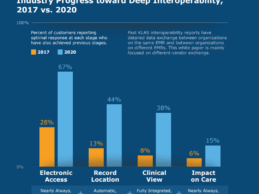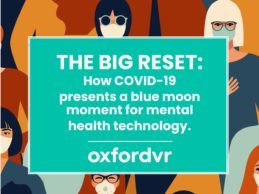Contract Logix white paper reveals the top 10 most important contract management KPIs and how to maximize their impact
It's critical for every healthcare organization to monitor and optimize its contracts and contracting processes using key performance indicators (KPIs). But how do you determine which KPIs are the most important to your business and how do you harness the data required to benchmark and track them?
By benchmarking and tracking these KPIs in your healthcare organization, you
Read More
white paper
Telehealth Utilization Declined 76% Nationally from 2020 to 2021
What You Should Know:
- From 2020 to 2021, telehealth utilization declined 76 percent nationally while, during that same period, retail clinic utilization increased 51 percent nationally.
- Retail clinic growth had the greatest increase among all alternative places of service studied—retail clinics, urgent care centers, telehealth and ambulatory surgery centers (ASCs)—as well as emergency rooms (ERs), in a new FAIR Health white paper containing the sixth annual edition of
Read More
KLAS Report Reveals Key Challenges from Provider Organizations
What You Should Know:
- In September 2022, KLAS hosted the sixth annual Digital Health Investment Symposium (DHIS). Executives from healthcare provider organizations, HIT companies, investors, and innovators came together to collaborate on important developments in healthcare technology.
- Drawing on insights from a pre-summit survey as well as insights shared at the summit in small-group discussions, KLAS published a white paper highlighting core challenges identified by summit
Read More
Medical Natural Language Processing Tech Has Come of Age
For many years, natural language processing (NLP) has held the promise of dramatically increasing the ability of healthcare organizations to quickly and accurately understand unstructured medical text in clinical notes. Using medical NLP, healthcare providers, clinical researchers, and payers would uncover meaningful insights hidden in unstructured text faster, with fewer errors, and at less cost than manual data review and analysis. This high-quality medical-grade data in turn would drive
Read More
43% of Consumers Spend Up To A Month Correcting Billing Errors
What You Should Know:
- In the online survey administered to 800 U.S. consumers who had found at least one medical billing error in the last five years, 41% of the consumers are significantly frustrated trying to address billing errors.
- Zelis, a company modernizing the business of healthcare, announced findings from a new study on consumer billing conducted in partnership with Hanover Research, an independent research firm. The full results and insights are featured in the
Read More
EMPI/MPI: An End-to-End Approach to Patient Data Integrity
Maintaining patient data integrity is more complicated than ever; cybersecurity threats loom, patients are taking more ownership of their care (self-registration, for example) and health system merger activity is on the rise. It can make the quest for the ever-elusive 1% maximum duplicate rate seem, at times, unattainable.
But a secure, accurate, and duplicate-free MPI/EMPI can be achieved. It just requires a multi-pronged approach to protect data throughout its journey into a health system
Read More
CHIME-KLAS Report Reveals 10 Key EMR Interoperability Trends
What You Should Know:
- New CHIME-KLAS interoperability report reveals steady
progress in some areas related to interoperability and leaps forward in others.
- A total of 67% of provider organizations reported they
often or nearly always had access to needed records in 2020, up from 28% in
2017. Providers noted improvements in functionality and usability for tasks
like locating and viewing records.
Both providers and the companies that produce the hardware and software needed
Read More
Report: How COVID-19 is a Blue Moon Moment for Mental Health Technology
What You Should Know:
- Oxford VR publishes a new position paper ‘The Big Reset: Why COVID-19 presents a blue moon moment for mental health technology.’
- The white paper highlights how the coronavirus crisis has been a greater catalyst for the implementation of telecare in practice, than two decades of many brilliant, but many failed attempts too.
Oxford VR, a provider
of evidence-based automated VR therapy has published a new position paper ‘The
Big Reset:
Read More
Executive Insights: Top Healthcare Predictions & Trends to Watch in 2020
As we close out the year, we asked several healthcare industry executives to share their predictions and trends for 2020.
Robbie Hughes, Founder, and CEO, Lumeon
“Following the announcement of the Trump administration's price transparency requirement – and the ensuing backlash from hospital groups – the issue of price transparency will dominate the healthcare industry next year. Regardless of the outcome of the lawsuit, I expect we'll see more attention around the importance of the
Read More
Inaccurate Provider Directories Costs Physician Practices $2.76B Annually
- Providers spend $2.76 billion each year on provider directory maintenance, a new survey by CAQH found. - For individual practices, this intensive process costs $998.84 per month--the equivalent of one staff day per week. That is time and money that most providers can't afford to waste.- CAQH surveyed 1,240 physician practices last month and just released "TheHidden Causes of Inaccurate Provider Directories"-- a new white paper that details the burdens the survey uncovered and what the industry
Read More










